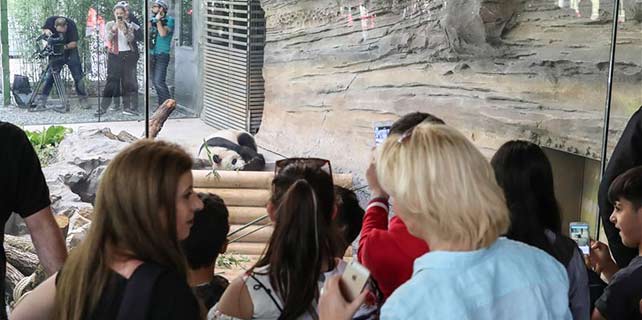Study of caterpillars shows how creepy-crawlies could help shape robots
A young academic won a major award from the prestigious Zoological Society of London recently for his devotion to studying the lives of "creepy crawlies".
Simon Chen researches how caterpillars manage to hold on to their food plants without falling off, and his findings could even have implications for future robotic technology.
The ZSL scientific prize that Chen won is an award established in 1837 to recognize outstanding contributions to zoological research and conservation by recognizing some of the brightest minds in conservation science.
Chen, whose mother is originally from China, has been interested in nature generally and in insects specifically since his childhood in Germany where he was brought up.
"But I never imagined I would do lab-based caterpillar research," he said.
His interest grew after he won a young scientists competition in Germany through collecting and identifying different species of caterpillars.
That eventually led to his academic interest in caterpillars and moths, which in turn resulted in an invitation to participate in a BEF China project as a member of a team from Germany's University of Lunenburg. The BEF is a joint project involving universities in China, Germany and Switzerland, to study biodiversity and ecosystems.
Later Chen met his current supervisor Walter Federle from the Department of Zoology at the University of Cambridge, where he studies how caterpillars use their legs.
Chen explained his research findings regard different strategies for caterpillars to attach to surfaces between the two species. "The garden tiger moth uses its very advanced prolegs, which are additional legs on the abdomen, to directly attach to flat, edged, or rod cylinder surfaces. This is unlike for most insects which only have legs on the thorax."
However, "The African bush brown butterfly has simpler legs that do not grip flat surfaces and especially flat smooth or fine rough surfaces well. Instead, they cover the surface in silk and then hold on to the silk threads. This caterpillar can even avoid wasting silk by adjusting how much silk it produces, as well as the strength of the thread it produces depending on the roughness or angle of the surface," Chen introduced.
As well as paving the way for future pest control among crops, Chen's work could help in the development of future robots.
"Caterpillar attachment is particularly interesting because caterpillars are one of the few legged soft-bodied organisms and allow us to understand how this type of organism moves, potentially inspiring soft robotics applications," the young researcher said.
Chen noted that caterpillars are important herbivores with major effects in ecosystem function or sometimes as pests.
"Understanding how they attach to surfaces helps us to understand how they use their food plants, and how plants might defend themselves, or how we might defend crop plants without using pesticides," he said.
This fall, Chen starts a PhD program at Cambridge to continue his research into the amazing world of caterpillars.
"In the future, I would like to understand how caterpillar prolegs evolved," he said.
Xinhua






















